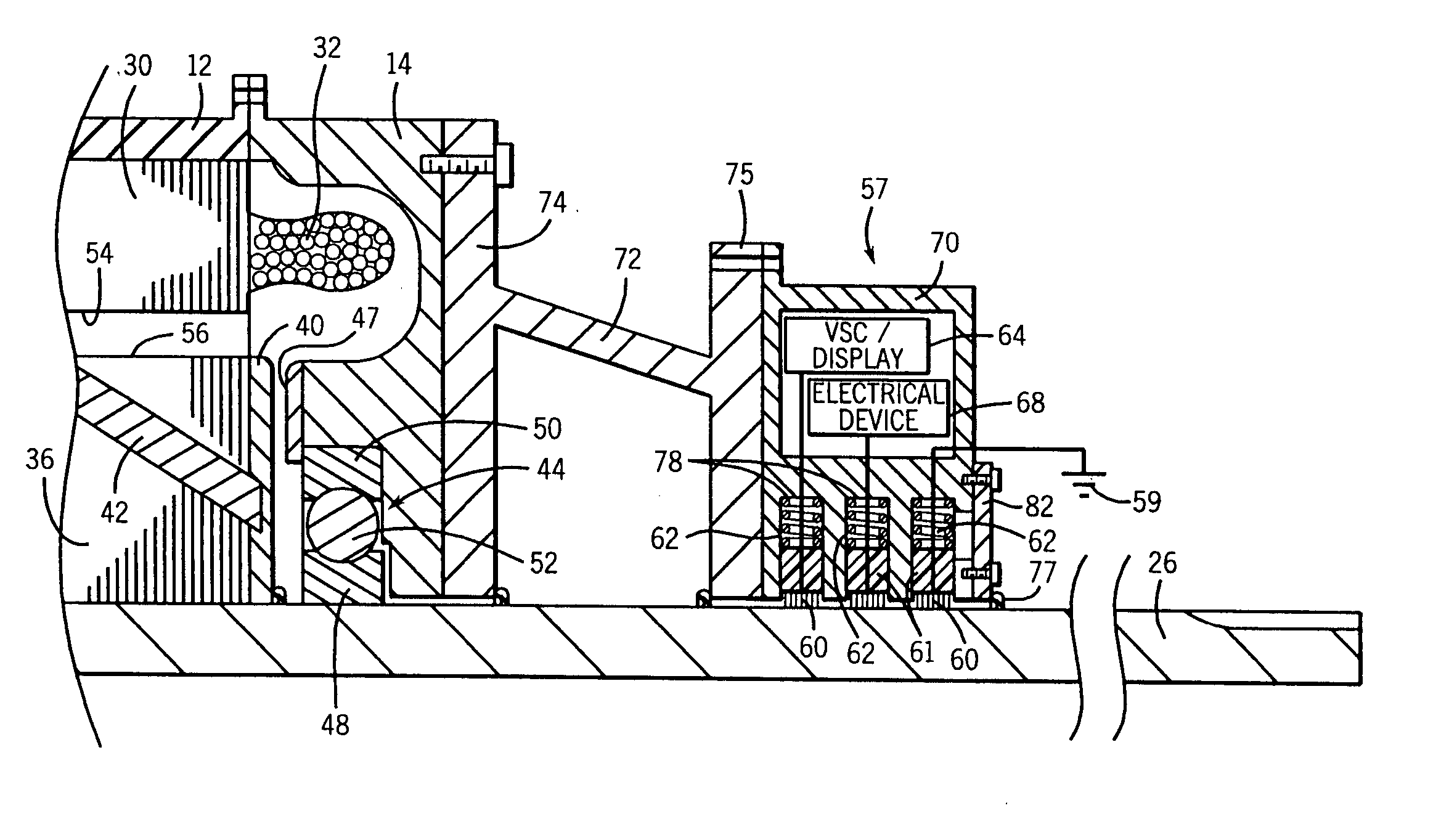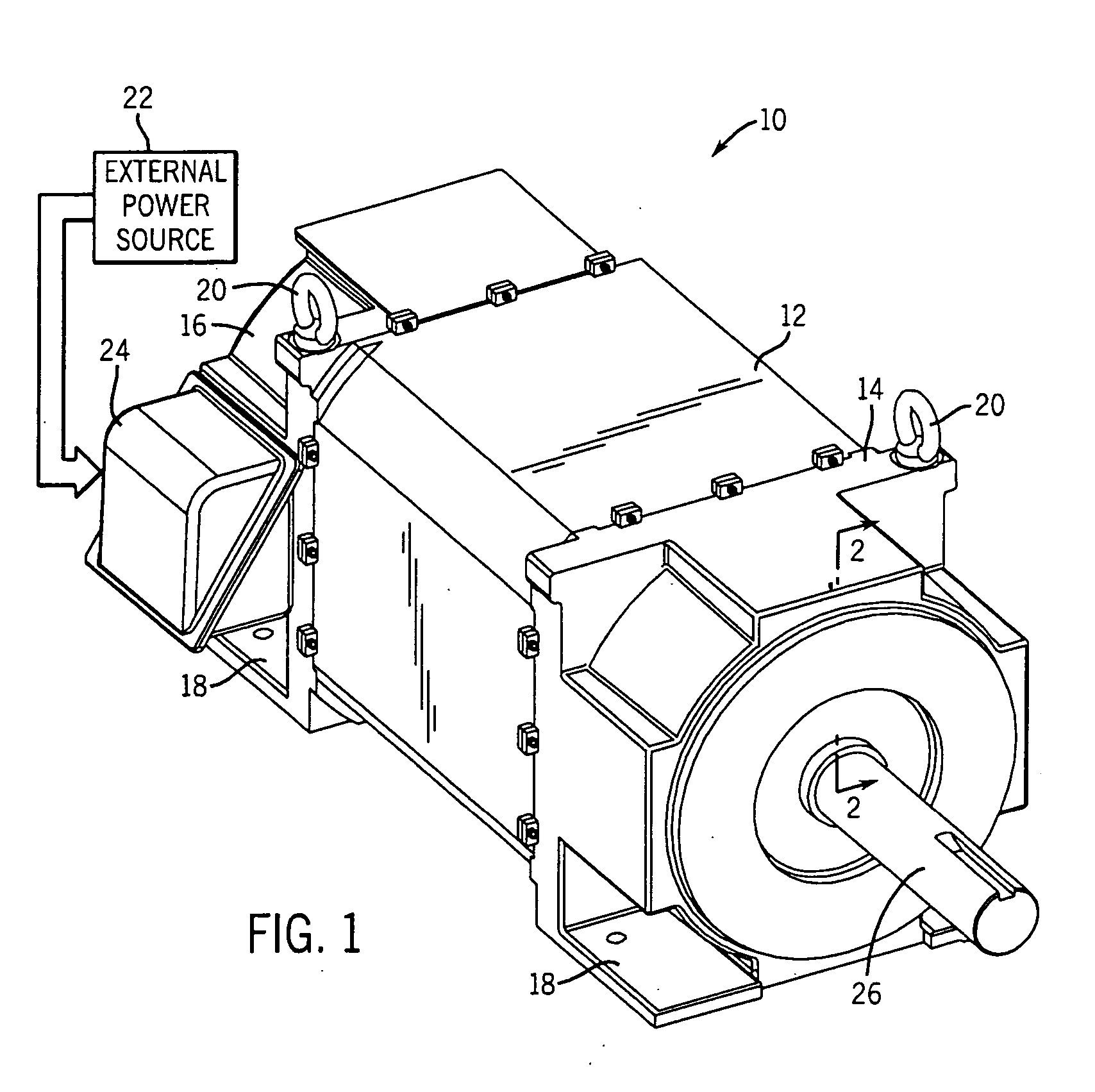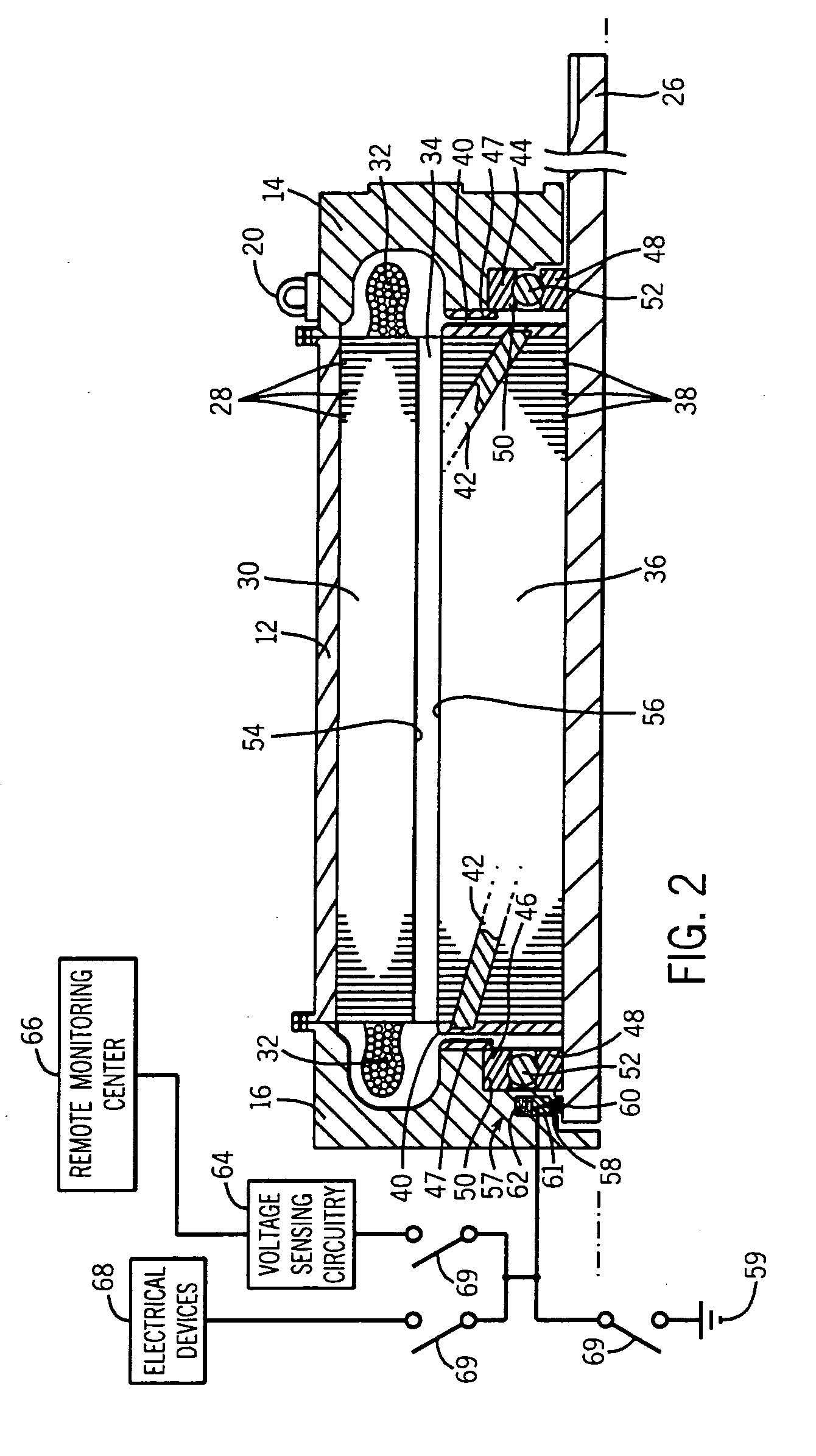Method and apparatus for dissipating shaft charge
a technology of shaft charge and dissipation method, which is applied in the direction of current collectors, dynamo-electric machines, supports/encloses/casings, etc., can solve the problems of rotor charge accumulation, damage to mechanical components of the motor, and rotor charge accumulation, so as to facilitate the dissipation of shaft charge and mitigate the likelihood of damage in the device
- Summary
- Abstract
- Description
- Claims
- Application Information
AI Technical Summary
Benefits of technology
Problems solved by technology
Method used
Image
Examples
Embodiment Construction
[0016] As discussed in detail below, embodiments of the present invention provide apparatus and methods for dissipating charge build-up within rotatable members of devices operable in hazardous environments. Although the discussion regarding the present invention focuses on electric motors, the present invention is equally applicable to a number of applications in which a rotatable member develops charge during operation. For example, the present invention is applicable to conveyor systems, gearboxes, and drive mechanisms, to name but a few applications. Additionally, the term “explosion-proof” appears throughout the present discussion to describe various items. As employed herein, the term “explosion-proof” refers to an enclosure that is configured to withstand the pressure of an explosive mixture exploding inside the enclosure and to prevent the propagation of the explosion to the atmosphere surrounding the enclosure. By way of example, associations, such as the National Electrica...
PUM
 Login to View More
Login to View More Abstract
Description
Claims
Application Information
 Login to View More
Login to View More - R&D
- Intellectual Property
- Life Sciences
- Materials
- Tech Scout
- Unparalleled Data Quality
- Higher Quality Content
- 60% Fewer Hallucinations
Browse by: Latest US Patents, China's latest patents, Technical Efficacy Thesaurus, Application Domain, Technology Topic, Popular Technical Reports.
© 2025 PatSnap. All rights reserved.Legal|Privacy policy|Modern Slavery Act Transparency Statement|Sitemap|About US| Contact US: help@patsnap.com



